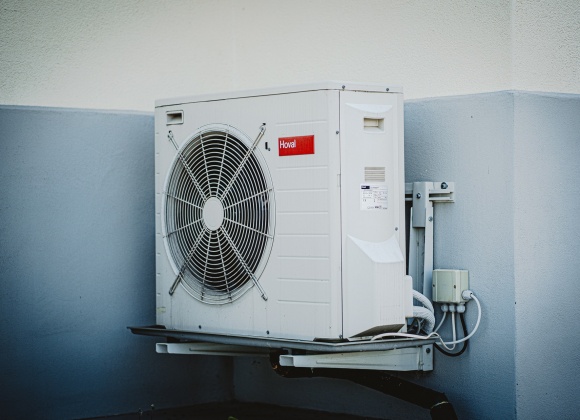Is Improving Energy Ratings More Difficult than Before?
Homeowners are increasingly being warned of the need to improve their energy efficiency. There are obvious environmental incentives to invest in these changes; however, even if you have lots of money to throw at the problem, it may not be enough.
For some households, improving energy-efficiency levels – and the ratings that go with them – is much more difficult than it is for others. For example, newer homes are more likely to be designed with efficiency in mind than older constructions.
This is leading worried homeowners to wonder if it’s even possible for them to improve their energy rating to a level that the government deems acceptable.
Read on to learn more about energy ratings, how to improve them, and current concerns regarding government targets.
What is an Energy Rating?
Homeowners can discover their property’s level of energy efficiency by obtaining an Energy Performance Certificate, or EPC. EPCs were introduced in the UK in 2007, and their purpose is to assess current levels of energy efficiency according to a scale.
These non-invasive inspections and evaluations are undertaken by qualified energy assessors who visit the property and assess the efficiency of important features such as heating and lighting systems.
Alongside the rating, EPCs provide suggestions for improved energy efficiency. They will make estimations regarding the amount of money required to make cost-effective improvements to the current rating.
Once an EPC is obtained, it is valid for 10 years. It is required whenever a property is built, sold, or rented. Property owners pay for their own EPCs, which are offered at different prices by a range of companies.
If you are not in possession of an EPC when legally obliged to be, you can face a fine. Homes that were built before 2007 and have not been sold or rented since then may not have an EPC yet: homeowners are only legally obliged to obtain one in these specific circumstances.
How is an Energy Rating calculated?
An EPC rating is calculated based on the following information:
- the type of building and whether it is detached or not
- the age of the building
- the number of habitable rooms (excluding kitchens, bathroom hallways, stairs and
- landings)
- extensions and their construction and rooms in the roof
- the dimensions of the building and the number of floors
- the amount and type of glazing
- the material used to build the property
- wall insulation
- roof construction and insulation
- the number of chimneys
- the heating systems and the type of fuel used
While some of these elements can be improved easily, for example, by installing triple glazing, others are impossible to rectify. Homeowners can’t change the age of their property, after all! This is undoubtedly why some people are anxious about the growing importance of EPC ratings.
The information gathered above is used to allocate points on a scale from 1 to 100. The more points, the higher the rating. The best possible EPC rating is A, which requires over 92 points. The worst possible grade is G, allocated to homes that fail to score over 20 points.
What are current expectations regarding Energy Ratings?
The government has set a target: to cut all greenhouse gas emissions to net-zero by the year 2050 and so tackle the dangerous acceleration of the climate crisis.
Meeting this target will require significant changes to be made over the next 30 years, and household efficiency will undoubtedly be a major focus since currently, 40% of UK emissions come from households.
The average EPC rating for houses in England and Wales is a D. New-build homes tend to have a higher rating than older buildings. You can sell your home regardless of the EPC rating; however, prospective buyers are likely to take this rating into consideration.
The minimum level of energy efficiency required to rent your property is E. Rental homes that currently comply with energy efficiency standards may soon have to take action to retain their status.
How Can Homeowners Improve Their Energy Rating?
Homeowners could improve their energy rating by investing in the following upgrades:
1. Switching to LED lightbulbs. This is a quick, easy, and affordable way to quickly improve a property’s energy efficiency.
2. Installing insulation to the walls and roof. If heat can easily escape from a property, it isn’t energy efficient. Insulation goes some way in preventing this escape.
3.Upgrade to double or triple glazing. Double glazed windows are relatively common now, but you can improve your windows even further by triple glazing them.
4. Buy a better boiler. An old boiler is unlikely to be performing at maximum efficiency. Newer condensing models will help you improve your overall rating.
5. Consider a smart meter. The main advantage of a smart meter is that it helps you understand how your household consumes energy so you can improve your habits and boost your energy efficiency.
What are the obstacles to improvement?
The first and most obvious obstacle is the financial investment required to improve a property’s energy efficiency. Bear in mind that a new boiler alone can cost anything between £1000-3000.
The Residential Landlords Association has reported that in 2019, 290,000 rental properties needed to be improved by landlords before they could be put on the market. The average cost of these improvements was £1,200.
Someone selling their own home for financial reasons may not have the resources to upgrade its energy efficiency level before they put it on the market. However, the EPC rating is something many prospective buyers will take into consideration.
Even if homeowners do have the funds required, recent research by Rightmove has found that just under 1.7 million houses in England and Wales simply do not have the potential to improve higher than an EPC rating of between D and G.
Across England and Wales, 59% of homes have a D, E, F, or G rating. This could be reduced to 11% if suggested improvements were made.
But what about the remaining 11% of properties? This is where concerns lie regarding the realism and potential consequences of government target-setting.
What is the impact of a low Energy Rating?
For those unable to increase their Energy Rating, the consequences can be undesirable. Of course, their fuel bills will be higher than those of energy-efficient properties, but a low rating will also exclude them from attractive green mortgages with lower rates.
If a homeowner is unable to raise their energy rating to the minimum government standard – currently an E, but due to be raised to C in the near future – then they will be legally forbidden to rent out their property.
Landlords who invest in properties to help them reach this standard may pass on these costs to their tenants. Rent in the UK is already at unaffordable levels for many tenants, especially young renters.
Many homeowners who are unable to improve their property (for financial reasons or otherwise) have reason to worry about the future. What will happen if they cannot meet increasing government standards?
Will they simply continue to face exclusion from the financial rewards enjoyed by those with energy-efficient properties or will they potentially face punishment for the status of their houses?
These are the questions that many homeowners have regarding EPCs and government targets.
Which groups are most affected by this issue?
Given the financial investment required to install boilers and insulation and improve window glazing, homeowners with lower income and less money in savings will naturally find it more difficult to improve their energy rating.
There are observable regional differences when it comes to energy efficiency levels and the potential for properties to reach acceptable standards through improvement works.
This is Money has reported that in Gwynedd, Wales over 77 percent of homes have a rating of D or below. Even with suggested repairs and upgrades, this figure could only improve to about 22 percent.
Similarly, in Southend-on-Sea, 72 percent of homes are rated D or below. Over 19 percent of homes are thought to be unable to reach an EPC of C or above – even if they do follow recommended improvements.
Rural areas, where people are more likely to live off the gas grid, are also especially unlikely to meet increasing government standards when it comes to energy efficiency.
What has the Government said in response?
The Government has a current target of getting as many homes as possible to a C rating by 2035. This target is earlier for privately rented homes, and it’s easy to see how this will be enforced: right now, properties without a G rating or higher are already illegal to rent out.
The Department for Business, Energy and Industrial Strategy claims no one will be prevented from selling their home because they do not meet a specific EPC band; however, the financial incentives for energy-efficient properties will undoubtedly make these properties less attractive in comparison.
Although improving energy-efficiency levels can be difficult, it’s definitely becoming more of an urgent priority – for the environment, for the Government, and for homeowners alike.



